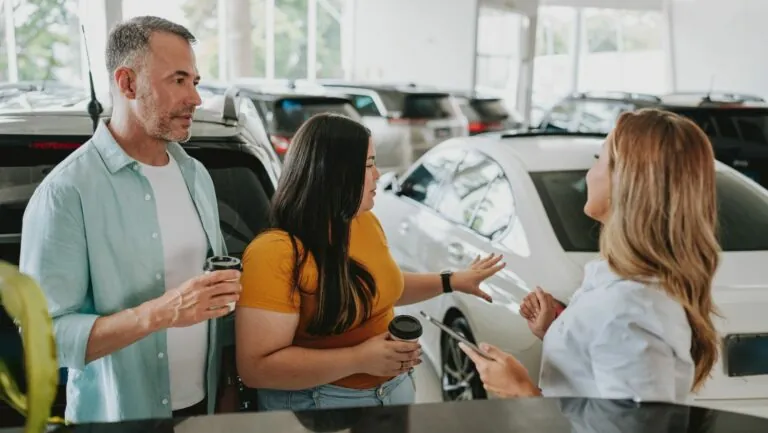Buying a used car privately can save you money, but it also carries higher risks than buying from a dealer. Without the protections that come with dealership sales, you’ll need to be more vigilant.
This guide walks you through everything to check mechanically, legally, and financially so you can buy with confidence.
Table of Contents
ToggleFirst, Let’s Understand the Differences in Private Sale
When buying from a private seller, you don’t have the warranty or statutory protections that a licensed car dealer must give. The rule is: caveat emptor, buyer beware.
Unlike dealerships, private sellers require the full payment up front. If you’ve found a great deal but don’t have all the cash on hand, a personal loan without a formal credit check could provide the funds you need to secure the car.
In a private sale, once you pay and receive the car, you assume all risks — mechanical faults, hidden damage, or outstanding finance. That makes doing your due diligence essential.
What to Look for Mechanically
Inspecting the car thoroughly, or preferably having a trusted mechanic inspect it, is critical.
Here’s what to check, inside and out:
Exterior & Bodywork
- Look for signs of rust, dents, or mismatched paint that might hint at past accidents or repairs.
- Check panel alignment and gaps between doors, hood and boot — inconsistent spacing may suggest structural damage.
- Use a soft magnet to test for body filler (which can hide repairs).
- Examine underbody and wheel arches for corrosion and damage.
- Ensure glass, mirrors, headlamps, lenses, and trim are intact and uncracked.
Interior & Electronics
- Inspect upholstery, trim, carpets, seat rails, and seat belts for wear and integrity.
- Test all electrical functions: windows, locks, lights, indicators, stereo, and instrument panel.
- Check heating, air conditioning, blower fan, and ventilation systems.
- Look for warning lights on the dashboard at startup (ABS, airbag, engine light).
- Smell the interior. Musty or chemical smells may indicate water damage or mould.
Under the Bonnet/Mechanical Systems
- Check for fluid leaks in the engine bay, coolant tank, brake lines, and transmission.
- Inspect hoses, belts, seals, and wiring for cracking or deterioration.
- Check oil level and quality; dirty or low oil is a red flag.
- Look at battery terminals and connections for corrosion.
- Examine brake fluid, power steering fluid, and coolant levels.
- Assess suspension and steering components: shocks, struts, tie rods, bushings.
- Inspect tyres: tread depth, uniform wear, matching brands and sizes.
Test Drive Assessments
- Drive on different road types: smooth surfaces, bumps, inclines, and highways.
- Check acceleration, braking, steering responsiveness, and gear changes.
- Listen for unusual sounds: knocking, squealing, grinding, rattling.
- Test parking brakes, hill starts, and low-speed control.
- Observe clutch, transmission, and engine behaviour under load.
How to Check the PPSR for Finance Owing

One of the biggest legal risks in private purchases is outstanding finance or security interests on the vehicle. Even if you pay the seller, a lender might still have rights to repossess the car if it’s under finance.
- Use the Personal Property Securities Register (PPSR) to check if the car has any recorded security interests. A search costs about $2.
- The PPSR can reveal if the vehicle is encumbered (i.e. tied to a loan or lien).
- You’ll need the VIN or chassis number (not engine number or plate) to perform the search.
- It’s wise to search twice: once when you locate the car, and again just before finalising payment to ensure nothing has changed.
If the PPSR shows a security interest, you can negotiate with the seller to clear the debt first (with proof) or walk away. Never proceed until the car is cleared.
How to Negotiate a Fair Price
Once mechanical and legal checks are clean, it’s time to negotiate. Here are strategies:
- Use your mechanical findings as leverage to request repairs or a lower price.
- Compare the car’s valuation using tools like Redbook or Glass’s Guide to see if the asking price is reasonable.
- Factor in upcoming maintenance: tyres, timing belts, brakes, and servicing.
- Be ready to walk away if the seller stalls or refuses verification.
- Prefer paying by bank transfer or bank cheque, not cash, for better traceability.
In private sales, there’s often more wiggle room than in dealerships. But you must be confident of your assessments before committing.
Final Notes Before You Purchase
Before finalising:
- Confirm the seller is the registered owner (check rego papers versus driver’s licence).
- Ensure registration, stamp duty, and transfer fees are understood and included.
- Get a written receipt with VIN, sale price, date, and signatures.
- Retain the PPSR certificate and all inspection records.
- Register the vehicle in your name promptly to avoid liabilities.
Conclusion
Buying a used car privately can save you money, but only if you take the time to do it properly. Always inspect the vehicle, check the PPSR, and confirm the seller’s details before paying anything.
If you’ve found a good deal but don’t have all the cash on hand, a small personal loan with minimal credit checks can help you secure the car quickly. Just make sure you borrow responsibly and stay within your budget.
With the right checks and preparation, you can drive away with confidence knowing you’ve made a safe and smart purchase.



